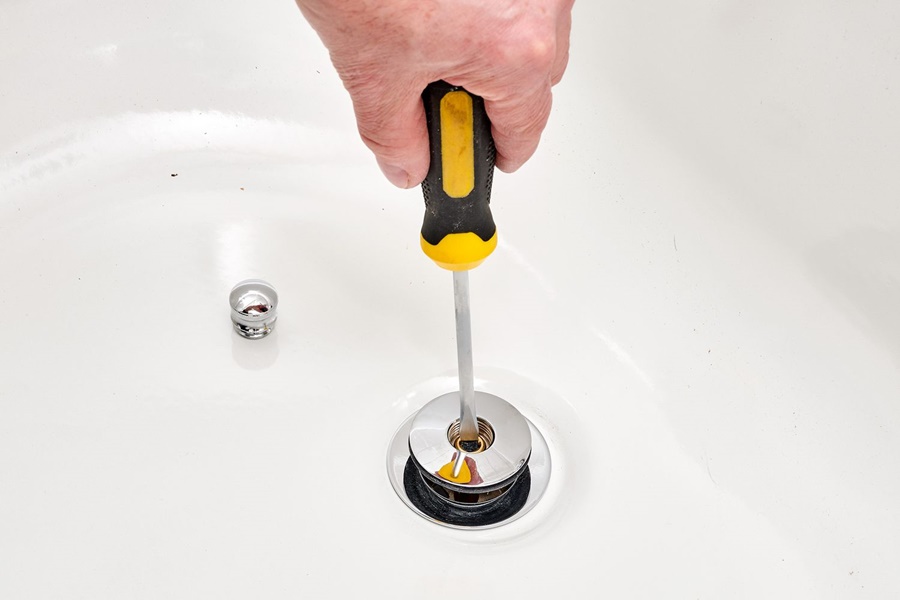Removing a stubborn bathtub drain can seem like a challenging task, but with the right tools and techniques, the process becomes straightforward and efficient. In this comprehensive guide, we explain how to unscrew a bathtub drain safely and effectively, ensuring you complete your plumbing job without damaging the fixture or surrounding materials.
Understanding the Type of Bathtub Drain You Have
Before attempting to remove your drain, it’s crucial to identify the type of bathtub drain stopper installed. The removal method often depends on the specific mechanism.
Common Types of Bathtub Drains Include:
Toe-Touch Drain: Operated by pushing with the toe to open or close.
Lift-and-Turn Drain: Twists to open and close, secured with a set screw.
Push-Pull Drain: Similar to lift-and-turn but with a push/pull action.
Trip Lever Drain: Operated via a lever on the overflow plate.
Grid or Pop-Up Drain: Fixed grate style or spring-loaded pop-up.
Knowing your drain type allows you to use the correct tools and avoid unnecessary damage during removal.
Essential Tools for Unscrewing a Bathtub Drain
To carry out this task efficiently, prepare the following plumbing tools and supplies:
Flathead screwdriver
Adjustable wrench
Drain wrench (tub drain remover tool or dumbbell wrench)
Allen (hex) key set
Needle-nose pliers
Channel-lock pliers
Penetrating oil (e.g., WD-40)
Clean rag or cloth
Flashlight (optional)
Always use tools appropriate for your specific drain type to prevent damage to the tub's finish or internal plumbing.
How to Remove a Toe-Touch Drain Stopper
1. Open the Drain by pressing it down and letting it spring back up.
2. Hold the Cap and twist it counterclockwise. Use a rag to protect your hand.
3. If it spins freely, unscrew the entire stopper from the drain flange.
4. Use pliers if needed, but wrap the stopper in cloth to avoid scratching.
Once the stopper is removed, proceed to unscrew the drain flange using a drain wrench.
How to Remove a Lift-and-Turn Bathtub Drain
1. Lift the Stopper to the open position.
2. Hold the base with one hand while turning the top knob counterclockwise.
3. If the knob won’t loosen, check for a set screw underneath using a flashlight.
4. Use an Allen key to loosen the screw inside the knob.
5. Remove the stopper, then insert a drain wrench into the flange and turn it counterclockwise.
Apply penetrating oil if the flange is stuck. Let it sit for 15 minutes before attempting removal again.
How to Remove a Push-Pull Bathtub Drain
1. Pull the stopper into the open position.
2. Turn the knob counterclockwise until it detaches from the post.
3. Remove the cap and set it aside.
4. Use a flathead screwdriver to unscrew the brass insert.
5. Insert a tub drain wrench into the crossbars of the flange and unscrew counterclockwise.
If crossbars are corroded or missing, use a drain extractor tool for broken or stripped drains.
How to Remove a Trip Lever Drain Stopper
1. Unscrew the overflow plate screws using a Phillips screwdriver.
2. Gently pull the overflow assembly out of the wall; the stopper is connected to a linkage.
3. Remove the assembly and inspect the stopper.
4. Clean any debris or hair buildup.
5. Use a drain wrench or dumbbell tool to unscrew the flange from the tub base.
Ensure you place the overflow screws in a safe location to avoid losing them during reassembly.
How to Remove a Grid or Pop-Up Drain
1. Remove the cover plate by unscrewing or gently prying it up.
2. For pop-up stoppers, press down and twist counterclockwise.
3. If resistance is met, check for a retaining screw underneath the cap.
4. Once removed, insert the drain wrench and rotate counterclockwise.
Take care not to drop any small screws or components down the drain during disassembly.
How to Unscrew a Stuck or Corroded Bathtub Drain
For drains that won’t budge:
Apply penetrating oil like WD-40 around the flange. Wait 15–20 minutes.
Use a hairdryer or heat gun on low setting to warm the area, loosening any hardened plumber’s putty.
Place the drain wrench firmly into the flange and use channel-lock pliers for extra torque.
For completely seized drains, use a reciprocating saw or rotary tool with a metal-cutting blade to carefully cut the flange (last resort only).
Always wear protective eyewear and gloves during advanced removal.
How to Remove the Drain Flange from the Tub
1. Insert a tub drain wrench or dumbbell wrench into the flange.
2. Turn counterclockwise with steady pressure.
3. If the flange won’t move, apply penetrating oil and wait.
4. Use channel-lock pliers on the drain wrench for additional leverage.
5. Once loose, remove the flange and inspect the gasket and putty beneath.
Clean any remaining old plumber’s putty or debris before installing a new drain.
Tips to Avoid Damage When Unscrewing a Bathtub Drain
Always protect the tub surface with a towel or soft cloth.
Never use excessive force, which may crack porcelain or damage the plumbing.
If unsure, call a licensed plumber to avoid costly repairs.
Replace old gaskets and use fresh plumber’s putty or silicone when reinstalling.
Always test the new drain for leaks before sealing permanently.
Conclusion
Removing a bathtub drain is a manageable task with proper preparation, patience, and the right tools. Whether you are dealing with a push-pull, lift-and-turn, or trip lever system, following these steps will help you unscrew a bathtub drain safely and efficiently.

